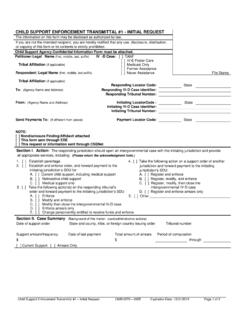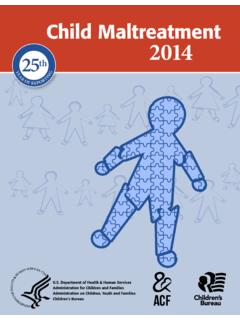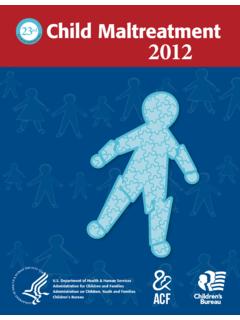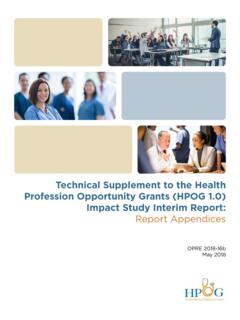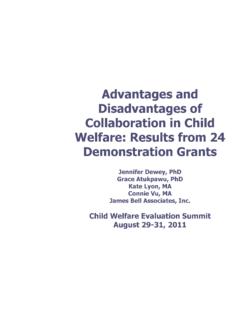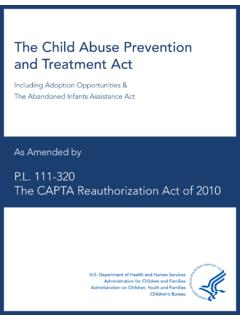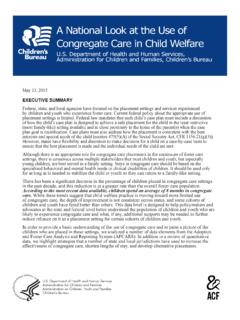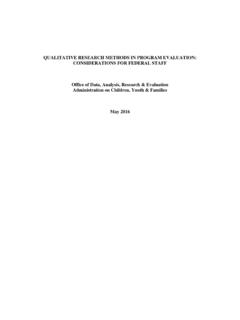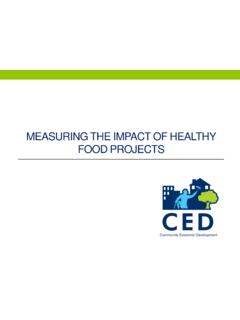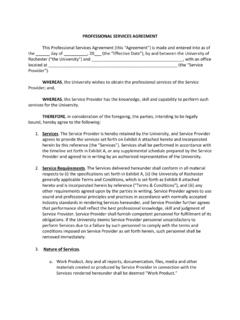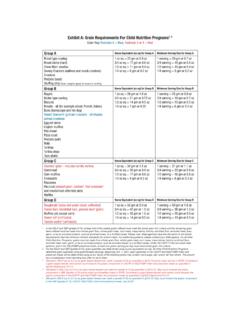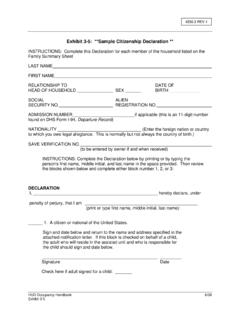Transcription of Child Maltreatment 2019
1 Child Department of Health & Human ServicesAdministration for Children and FamiliesAdministration on Children, Youth and FamiliesChildren s BureauYEAROF REPORTING25thYEAROF REPORTING30thThis report was prepared by the Children s Bureau (Administration on Children, Youth and Families, Administration for Children and Families) of the Department of Health and Human Services. Public Domain Notice Material contained in this publication is in the public domain and may be reproduced, fully or partially, without permission of the federal Access This report is available on the Children s Bureau website at Questions and More InformationIf you have questions or require additional information about this report, please contact the Child Welfare Information Gateway at or 1 800 394 3366.
2 If you have questions about a specific state s data or policies, contact information is provided for each state in Appendix D, State Commentary. Data SetsRestricted use files of the NCANDS data are archived at the National Data Archive on Child Abuse and Neglect (NDACAN) at Cornell University. Researchers who are interested in these data for statistical analyses may contact NDACAN by phone at 607 255 7799, by email at or on the Internet at NDACAN serves as the repository for the NCANDS data sets, but is not the author of the Child Maltreatment report. Recommended Citation Department of Health & Human Services, Administration for Children and Families, Administration on Children, Youth and Families, Children s Bureau.
3 (2021). Child Maltreatment 2019. Available from statistics-research/ Child - Maltreatment . Federal ContactCara Kelly, Welfare Program Specialist330 C Street, E. Switzer Building, Room 3419 BWashington, Maltreatment2019 Child Maltreatment 2019 Letter iiLetter from the Associate Commissioner: Child Maltreatment 2019 is the 30th edition of the annual Child Maltreatment report series. States provide the data for this report through the National Child Abuse and Neglect Data System (NCANDS). NCANDS was established in 1988 as a voluntary, national data collec-tion and analysis program to make available state Child abuse and neglect information. Data have been collected every year since 1991 and are collected from Child welfare agencies in the 50 states, the Commonwealth of Puerto Rico, and the District of Columbia.
4 Key findings in this report include: The national rounded number of children who received a Child protective services inves-tigation response or alternative response decreased from 3,534,000 for federal fiscal year(FFY) 2018 to 3,476,000 for FFY 2019. Comparing the national rounded number of victims from FFY 2018 (677,000) to thenational rounded number of victims in 2019 (656,000) also shows a decrease. The 2019 data show more than four-fifths ( ) of victims suffer a single type ofmaltreatment. Sixty-one percent are neglected only, percent are physically abusedonly, and percent are sexually abused only. More than 15 percent ( ) are victimsof two or more Maltreatment types. For FFY 2019, a national estimate of 1,840 children died from abuse and neglect at a rate per 100,000 children in the population.
5 The 2019 national estimate is an increase from theFFY 2018 national estimate of 1,780 children who died from Child State explanations for decreases in the number of children who received a CPS response and the number determined to be Maltreatment victims, and increases in the number esti-mated to have died of Maltreatment , are discussed in chapters 3 4 and Appendix D, State Commentary. The Child Maltreatment report series is an important resource relied upon by thousands of researchers, practitioners, and advocates throughout the world. The report is available from our website at research/ Child - Maltreatment . NCANDS would not be possible without the time, effort, and dedication of state and local Child welfare, information technology, and related agency personnel working together on behalf of children and families.
6 We gratefully acknowledge the efforts of all involved to make resources like this report possible and will continue to do everything we can to promote the safety and well-being of our nation s children. Sincerely,/s/ Jerry Milner Associate Commissioner Children s Bureau DEPARTMENT OF HEALTH & HUMAN SERVICES1 If fewer than 52 states reported data, the national estimate of Child fatalities is calculated by multiplying the national fatality rate by the Child population of all 52 states and dividing by 100,000. The estimate is rounded to the nearest 10. For 2019, 51 states reported data and for 2015 50 states reported data. Acknowledgements iiiChild Maltreatment 2019 AcknowledgementsThe Administration on Children, Youth and Families (ACYF) strives to ensure the well-being of our Nation s children through many programs and activities.
7 One such activity is the National Child Abuse and Neglect Data System (NCANDS) of the Children s and state statistics about Child Maltreatment are derived from the data collected by Child protective services agencies and reported to NCANDS. The data are analyzed, dissemi-nated, and released in an annual report. Child Maltreatment 2019 marks the 30th edition of this report. The administration hopes that the report continues to serve as a valuable resource for policymakers, Child welfare practitioners, researchers, and other concerned 2019 national statistics were based upon receiving case-level and aggregate data from the 50 states, the Commonwealth of Puerto Rico, and the District of wishes to thank the many people who made this publication possible.
8 The Children s Bureau has been fortunate to collaborate with informed and committed state personnel who work hard to provide comprehensive data, which reflect the work of their gratefully acknowledges the priorities that were set by state and local agencies to submit these data to the Children s Bureau, and thanks the caseworkers and supervisors who contribute to and use their state s information system. The time and effort dedicated by these and other individuals are the foundation of this successful federal-state 30th Edition of Child Maltreatment ivChild Maltreatment 2019 30th Edition of Child MaltreatmentThis edition marks the 30th instance Child Maltreatment data from the National Child Abuse and Neglect Data System have been publicly released in the Child Maltreatment report series.
9 Child Maltreatment is a highly successful report, which is relied upon by many users for critical statistics concerning Child abuse and neglect in the United States. The first report, National Child Abuse and Neglect Data System: Working Paper 1 1990 Summary Data Component was released in April 1992 and was the result of 4 years of work to design and implement a national data collection and analysis system for state Child protective services data. Data were collected from 49 states, the District of Columbia, the Territory of Guam, and all branches of the Armed Services. That first report was 80 pages long and included mostly duplicated counts of key aggregate indicators and analyses were conducted on a single year of data.
10 Decades later, the report is three times the size of the first edition (now more than 250 pages); contains data from 50 states, the District of Columbia, and the Commonwealth of Puerto Rico; and provides mostly unique counts of key case-level indicators. The current NCANDS Data Warehouse includes case- and aggregate-level data from 2002 2019, consisting of more than 50 million records, which enables complex multiyear and multistate analyses to be conducted. As NCANDS continues to evolve in response to changing legislation, needs from federal agencies, and the Child welfare field, the Child Maltreatment report will continue to be a comprehensive and user-friendly tool for decision makers at the federal, state, and private agency levels.
